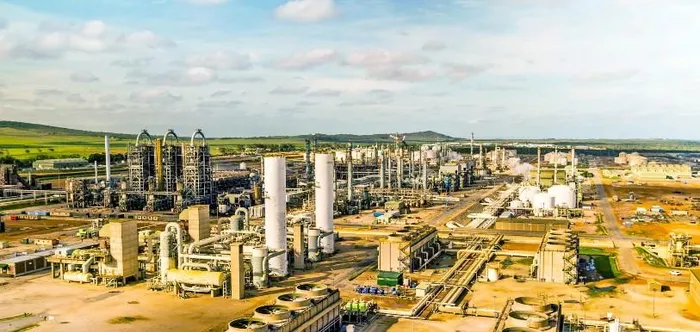South Africa grapples with crude oil supply risks as financial strain hits Natref refinery
PETROLEUM

The South African National Petroleum Company (SANPC) is the newly established State-Owned Company formed after the merger of three of the Central Energy Fund (CEF) subsidiaries, Igas, PetroSA and Strategic Fuel Fund.
Image: Supplied
Banele Ginidza
As South Africa grapples with an increasing dependence on fuel imports, the National Petroleum Refiners of South Africa (NATREF) refinery in Sasolburg has raised alarm bells over its future sustainability.
Sipho Mkhize, chairman of the South African National Petroleum Corporation (SANPC), on Friday outlined the financial strain faced by the only inland crude oil refinery, which is reliant on material transported via the Single Buoy Mooring (SBM) in the Indian Ocean off Durban.
The backdrop to this crisis is the shutdown of Durban's local refineries, which has severely reduced SBM utilisation by 80%, leading to soaring operational costs for NATREF.
Mkhize warned that if these financial pressures continue unabated, NATREF may have to cease operations, which would place an overwhelming burden on South Africa's petroleum supply chain
"These financial strains could force the refinery to close, making South Africa dependent on imports to grow to 85% of its petroleum needs and increasing vulnerability and security of supply risks," Mkhize said.
He was speaking at the launch of the SANPC, which has been formed through the merger of three Central Energy Fund (CEF) subsidiaries, i.e. iGas, the Strategic Fuel Fund (SFF), and PetroSA.
Currently, the nation imports around 75% of its fuel; a closure of the refinery could push this figure to a staggering 85%, significantly increasing the risk of supply vulnerabilities and security risks.
In response, Mkhize disclosed plans for converting the existing SBM into a Multi-Buoy Mooring (MBM), which would enhance flexibility in liquid bulk handling within the Durban Precinct.
This strategic move aims to alleviate the throughput bottlenecks currently crippling the NATREF refinery.
Additionally, Mkhize stated that SANPC will seek directives to obtain leases for sites linked directly to the refinery from the Transnet National Port Authority (TNPA) to bolster operations further.
Mkhize said the SANPC would reach out to the Ministers of Minerals and Petroleum Resources, Transport, and Forestry, Fisheries, and the Environment for the applications aimed at laying a foundation for a national energy champion that will be capable of delivering long-term value.
"SANPC is not just another company. It is a national asset. It is the embodiment of the government’s vision for a modernised, integrated, and impactful energy sector player," he said.
"South Africa needs a strong and agile energy company to be able to respond to the energy challenges faced by the country as well as advancing the key components of the National Development Plan."
Mkhize also emphasised the importance of establishing a State-owned independent terminal operator, which would manage port facilities to ensure equal access to berths. This strategy aims to counteract the agenda of International Oil Companies (IOCs) and prioritise supply security, thereby enhancing system integrity.
The SANPC’s recent acquisition of the dormant SAPREF refinery, capable of producing 180 000 barrels of oil per day, signals a pivotal moment for South Africa's energy landscape.
If revitalised, this facility could contribute significantly to national energy production or serve as the foundation for constructing a mega refinery with the capacity to process between 450 000 to 600 000 barrels daily. This shift would further diversify energy sources and reduce the country’s reliance on imported oil.
Mineral Resources and Petroleum Minister Gwede Mantashe reiterated the urgency of addressing the declining local refining capacity.
He noted a significant shift since 2009, with fuel imports rising 11% year-on-year, predominantly driven by a diminishing local refinery output against a backdrop of growing demand for refined products.
In 2022, local refining accounted for less than 35% of consumed finished products, a sharp decline from the approximately 80% in 2010.
"The entity will have to ensure that maximum value is extracted from the interest it holds in various blocks, including the blocks off the Southern African coast, while positioning itself to capitalise on the shifting demand towards cleaner based energy sources," Mantashe said.
With the integration of nearly 400 employees from the three merged entities and valuable assets such as the Rompco pipeline and Saldanha facilities, the SANPC is gearing up to become a critical player in South Africa's energy and petroleum landscape.
The SANPC's initiatives to improve oil supply security come at a crucial time for South Africa, which faces a sophisticated energy landscape and rising import dependency.
Visit: www.businessreport.co.za